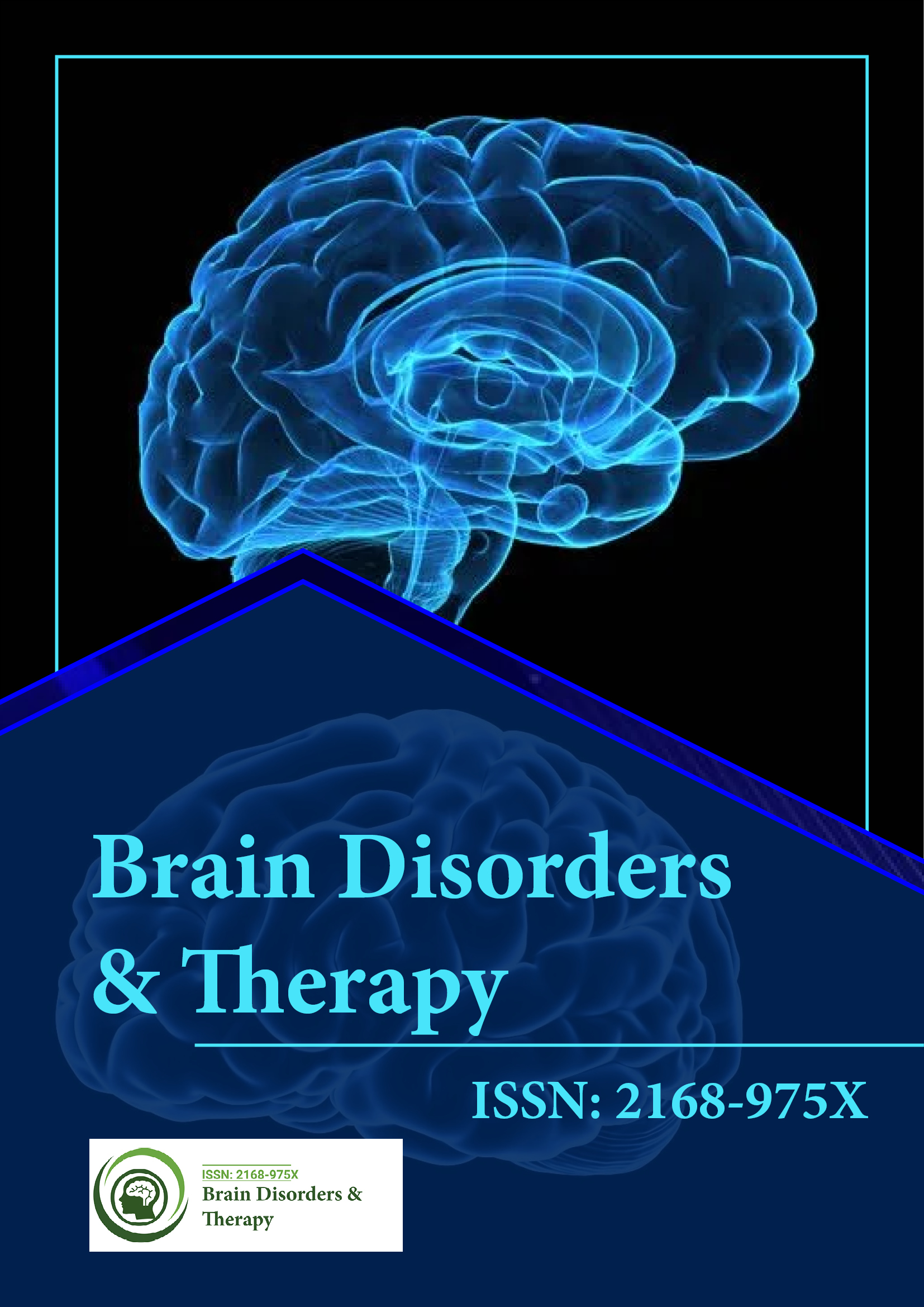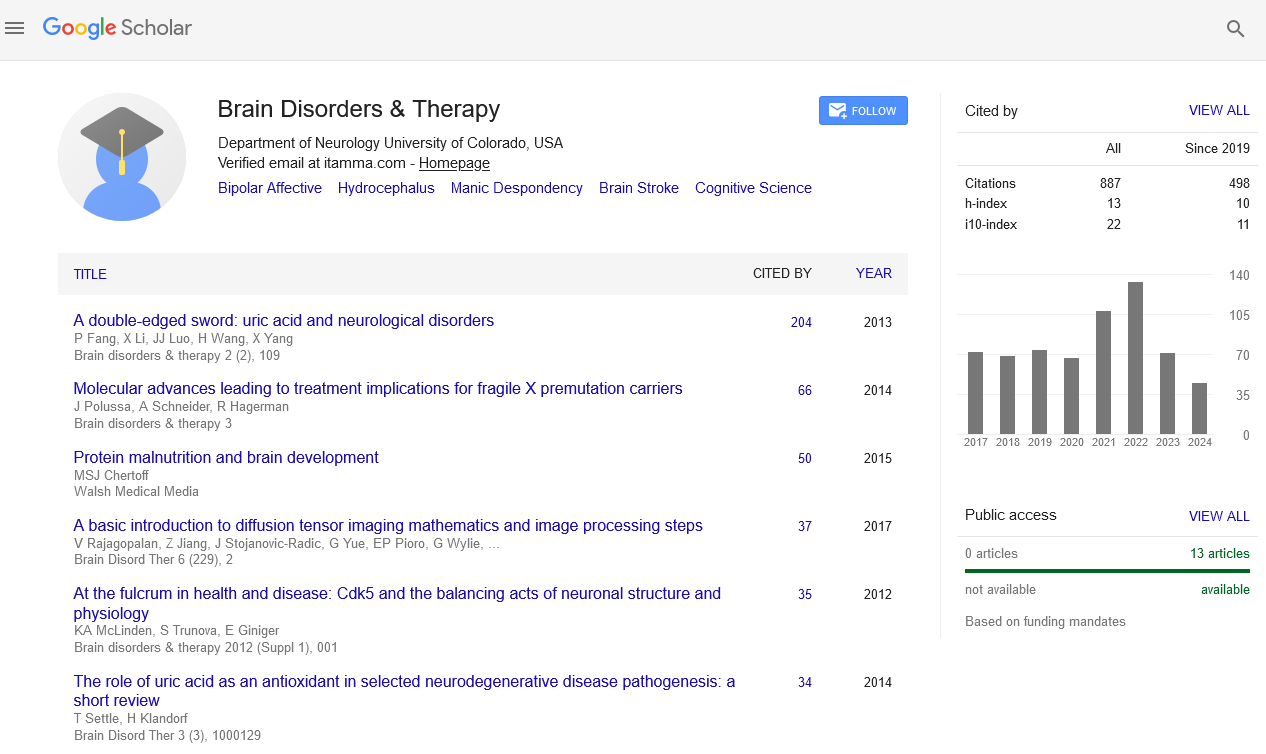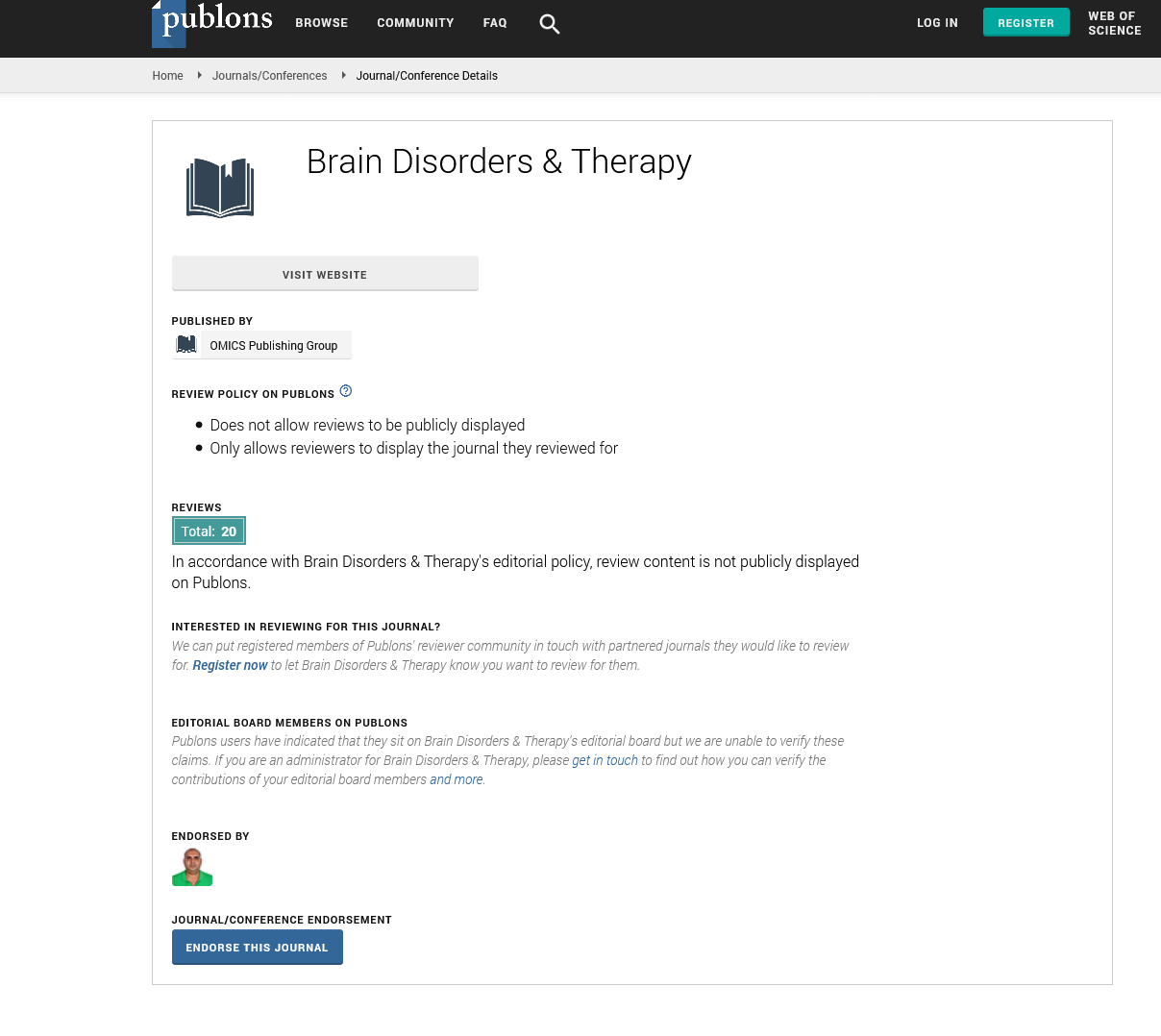Indexed In
- Open J Gate
- Genamics JournalSeek
- JournalTOCs
- RefSeek
- Hamdard University
- EBSCO A-Z
- OCLC- WorldCat
- Publons
- Geneva Foundation for Medical Education and Research
Useful Links
Share This Page
Journal Flyer

Open Access Journals
- Agri and Aquaculture
- Biochemistry
- Bioinformatics & Systems Biology
- Business & Management
- Chemistry
- Clinical Sciences
- Engineering
- Food & Nutrition
- General Science
- Genetics & Molecular Biology
- Immunology & Microbiology
- Medical Sciences
- Neuroscience & Psychology
- Nursing & Health Care
- Pharmaceutical Sciences
Opinion Article - (2024) Volume 13, Issue 4
The Science of Brain Mapping: A Focus on Depth Electrodes
Chie Kanno*Received: 22-Nov-2024, Manuscript No. BDT-24-27654; Editor assigned: 25-Nov-2024, Pre QC No. BDT-24-27654(PQ); Reviewed: 09-Dec-2024, QC No. BDT-24-27654; Revised: 16-Dec-2024, Manuscript No. BDT-24-27654(R); Published: 23-Dec-2024, DOI: 10.35248/2168-975X.24.13.281
Description
Functional brain mapping is an essential technique for understanding the complex organization of the human brain and its role in various cognitive and motor functions. Among the array of technologies available, depth electrodes stand out as a powerful tool for precise and high-resolution mapping of brain activity. This invasive approach, often used in patients undergoing evaluation for epilepsy surgery, has advanced our understanding of the neural underpinnings of behavior, cognition and pathological conditions.
Depth electrodes, also known as stereo Electro Encephalography (sEEG) electrodes, are thin, flexible wires inserted directly into specific brain regions. This technique enables the recording of electrical activity from deep structures that are otherwise inaccessible using surface-based methods like scalp Electroencephalography (EEG). The capability to record from both cortical and subcortical regions has made depth electrodes a critical asset in clinical and research settings, particularly for localizing epileptic foci and mapping functional networks.
The primary clinical application of depth electrodes is in the treatment of drug-resistant epilepsy. For patients who do not respond to antiepileptic medications, surgical intervention offers a potential cure. However, successful surgery depends on accurately identifying the regions of the brain responsible for generating seizures, known as the epileptogenic zone. Depth electrodes provide unparalleled precision in localizing these zones, particularly in cases where seizures originate from deep or overlapping brain regions.
By recording neural activity during seizures, depth electrodes capture the characteristic electrical signatures that define epileptogenic areas. In addition to seizure localization, they are used for functional brain mapping to identify regions responsible for critical functions such as language, memory and motor control. This dual-purpose approach minimizes the risk of postoperative deficits, ensuring that essential brain functions are preserved during surgical resection.
Depth electrodes are also used in neurostimulation studies, offering insights into the functional connectivity of brain networks. Electrical stimulation through these electrodes can elicit specific motor, sensory or cognitive responses, providing direct evidence of a region's role in a given function. This technique has proven invaluable in pre-surgical planning and advancing our understanding of brain network dynamics.
Depth electrodes provide a unique perspective on brain activity, capturing signals with a temporal and spatial resolution unmatched by non-invasive methods. The ability to record directly from neuronal populations offers insights into both normal and pathological brain function. For example, studies using depth electrodes have revealed the role of deep brain structures such as the hippocampus, amygdala and thalamus in processes like memory consolidation, emotional regulation and sensory integration.
In the context of epilepsy research, depth electrodes have deepened our understanding of seizure propagation. By recording from multiple brain regions simultaneously, researchers can trace the pathways through which epileptic activity spreads. This information is essential for developing surgical and non-surgical interventions aimed at disrupting these networks and preventing seizure generalization.
Depth electrode studies have also contributed to the field of cognitive neuroscience. Tasks involving memory, language and decision-making are often studied using depth electrodes to elucidate the neural mechanisms underlying these processes. For example, recordings from the hippocampus have provided direct evidence of its role in episodic memory, while studies involving the anterior cingulate cortex have shed light on its involvement in error monitoring and decision-making.
One of the key advantages of depth electrodes is their ability to access deep brain structures that are difficult to study using other techniques. While non-invasive imaging methods like functional Magnetic Resonance Imaging (fMRI) and Magnetoencephalography (MEG) provide valuable information about brain activity, their resolution is limited, particularly for regions buried deep within the brain. Depth electrodes overcome this limitation by directly recording from these areas, offering unparalleled clarity and precision.
Another advantage is the ability to record neural activity over extended periods. Patients undergoing sEEG monitoring for epilepsy typically have electrodes implanted for several days to weeks, providing a wealth of data on both ictal (seizure) and interictal (non-seizure) brain activity. This extended monitoring is essential for understanding the dynamic nature of brain activity and identifying patterns that might be missed in shorter recordings.
Conclusion
Functional brain mapping using depth electrodes is a powerful technique that connects between research and clinical practice. By providing high-resolution recordings from deep brain structures, this approach has advanced our understanding of neural function and offered new avenues for diagnosing and treating neurological disorders. As technology and analytical methods continue to evolve, depth electrode-based mapping is poised to play an even greater role in uncovering the complexities of the human brain, contributing to both scientific discovery and improved patient care.
Citation: Kanno C (2024). The Science of Brain Mapping: A Focus on Depth Electrodes. Brain Disord Ther. 13:281.
Copyright: © 2024 Kanno C. This is an open-access article distributed under the terms of the Creative Commons Attribution License, which permits unrestricted use, distribution, and reproduction in any medium, provided the original author and source are credited.


